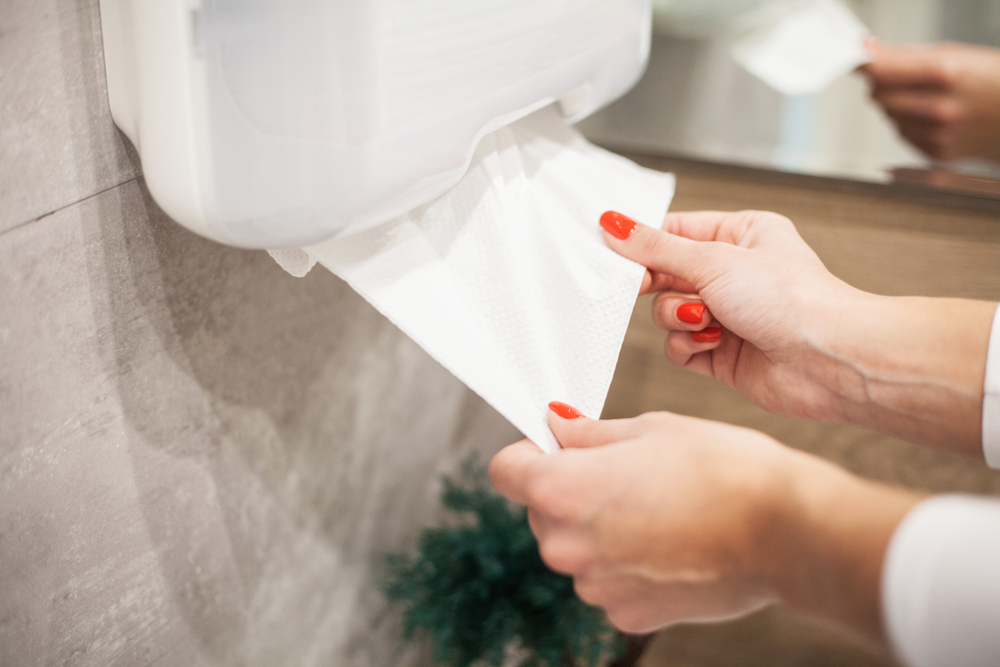Cleaning and disinfection can be considered the cornerstones of an effective infection prevention program. After all, the goal of cleaning is to uphold public health and safety. This takes on new meaning during a pandemic that has resulted in millions of deaths. Focusing on infection prevention will not only help reduce the risk of outbreaks, but it will also give your employees and facility visitors greater peace of mind. Read on to learn more about infectious disease patterns and how to prioritize infection prevention efforts.
Understanding Infections
Many people think about infections as cyclical. For example, cases of the flu would emerge in the fall and winter and subside in the spring. Pneumonia, bronchitis and the common cold are additional illnesses that are much more prevalent during the winter. And still there are other seasonal diseases that peak at varying times of the year.
Early on in the COVID-19 pandemic, there was even hope that cases of SARS-CoV-2 would subside in the summer, as some viruses can’t withstand warmer temperatures. We now know that COVID-19 is a year-round issue around the world, despite the climate. Models detailing daily COVID-19 cases in the United States do showcase a pattern of some sort. COVID-19 surges for roughly two months and then tends to decline for that same length of time. The two-month cycle has also occurred in other countries like Spain and India. Yet it’s still mostly unclear why this pattern is occurring.
So what are the key takeaways from COVID-19? The most important is that we need to move away from the belief that winter is the only harbinger of illness. Infections can occur at any time, so having a sound strategy in place to respond to one or several cases, or even a major outbreak, is key.
Protecting the Public Against Pathogens
Your facility must have a plan for dealing with pathogens. Consider the following
- Generate chemicals on site.
Many facilities had difficulty securing chemicals as demand reached unprecedented levels during the pandemic. Some were even forced to equip workers with chemicals they had never used before, leading to safety risks. Thankfully, organizations don’t have to rely on traditional supply chains for cleaning chemicals. On-site generation (OSG) allows facilities to create a cleaner and disinfectant in their janitorial closets using salt, water and electricity. These electrochemically-activated solutions (ECAS) are drain- and disposal-safe, do not contain any irritating ingredients, can be used on a wide variety of surfaces and replace many types of caustic chemicals with just two easy-to-use solutions. OSG supports infection prevention because your facility can quickly and seamlessly respond to an outbreak in the local community by generating more cleaner and disinfectant without worry that you’re overcleaning with potentially harmful products or will run out of supply.
- Promote hand hygiene.
Hand hygiene is widely considered the top way to prevent the spread of germs because dirty hands have a higher risk of contaminating surfaces and people than clean hands. Demonstrate your commitment to infection prevention by making hand hygiene essentials like soap, hand sanitizer and paper towels readily available throughout the facility. Restock as needed depending on traffic patterns. Couple these essentials with signage that can help drive compliance.
- Instill a culture of wellness.
If custodial employees are feeling unwell, they should not be afraid to take the necessary time away from their job. Staff should understand that coming to work while sick can spread germs to coworkers and building occupants. Build and uphold a culture that encourages employees to rest and recover so that they can support your infection prevention goals. Have a plan in place to adequately cover sick workers’ responsibilities while they are out so that cleanliness lapses do not occur in the facility. Additionally, you may consider posting signage that encourages facility visitors to avoid entering the building if they are experiencing symptoms of illness.
Preparation is the Key to Success
Being prepared for today’s and tomorrow’s infectious diseases reduces the risk that outbreaks will occur in your facility. Additionally, if cases of illness do arise, a thorough cleaning and disinfection program can help limit the spread of pathogens and keep your workers and visitors healthy. By following the above best practices, your organization can demonstrate that it is properly prioritizing infection prevention and has the know-how to deal with these challenges.
Infection prevention should be a year-round focus for your facility. Do you have a qualified team in place to uphold cleanliness to reduce the spread of pathogens? Contact GSF USA here and follow us on LinkedIn and Facebook to learn more.
